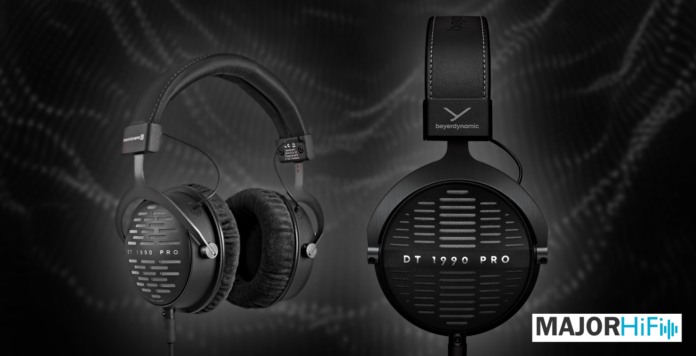The Beyerdynamic DT 1990 Pro has been a staple for studio professionals and audiophiles alike, celebrated for its precise sound reproduction and durable design. With the release of the DT 1990 Pro MKII, Beyerdynamic seeks to build upon this legacy with updated driver technology and refined features. Whether you’re a mixing engineer or a discerning listener, this review dives deep into what distinguishes the MKII from its predecessor in terms of sound quality, comfort, and overall usability. By the end, you’ll know exactly which model suits your needs best.
What You Get
| DT 1990 Pro | DT 1990 Pro MKII |
|
|
Look & Feel
In terms of build, both versions of the 1990 have the same quality. They use the same premium materials to make up their sturdy frame, which gives both headphones ensured durability. The only noticeable difference between the two headphones is the added grilles on the MKII. Otherwise, they both have the same level of comfort, offering the same secure pinch supported by velour earpads.
Design
Driver technology has changed for Beyerdynamic since the release of the original 1990. Both versions of the 1990 incorporate their Tesla technology, but the MKII uses a new Tesla.45 driver that significantly decreases the impedance of the headphones. The original 1990 is 250 Ohms, requiring a good amp to drive them properly. While I would also recommend some form of DAC/Amp combo for the MKII to achieve optimal performance, it is far less hard to drive.
Soundstage
Both versions of the DT 1990 will work well as a tool for mixing and mastering. The only thing you need to worry about is the original 1990 getting phased out. In terms of soundstage, you’re getting exactly the response you need to assess the stereo field. When switching between the two headphones, the most discernable differences I could hear were the MKII’s slightly better separation and height. While the original does a good job with spatial imaging, the MKII makes everything appear even more exact. It’s more open, but also more strict in the way it positions sound elements throughout the mix. Even though the imaging is made slightly clearer with the MKII, I would still consider both headphones to be very accurate and reliable.
Low End
The original 1990 was never a bass-rich headphone, and you won’t be getting much more with the MKII. Both headphones have a dynamic low-end response, that is best enjoyed purely on an analytical level. If there’s any difference between the two, the MKII is capable of having a grander impact at times. Its scale is greater compared to the original, offering a more significant concentration of sub-bass depth and rumble. With that said, both versions of the 1990 bring a realistic timbre to their bass response, and they both bring enough detail to keep you engaged.
Mids
What differentiates the midrange of both versions of the 1990s is how much room the frequency content occupies. Tonally, both 1990’s are very similar, possessing flat, even responses that are presented with a critical flavor. With the MKII, the mids have more blank spaces to play around with, so the frequencies appear with better transparency compared to the original, but they’re really not that far off. It does make instruments stand out a bit more though, and it makes them easier to localize in a mix. This could lead to making more informed decisions while in the studio, but it also feels a bit more compelling to listen to causally. The original appears more direct with its instrumental response, offering fuller, meatier frequency content.
Highs
If the highs on the original 1990 were a dealbreaker for you, I don’t think the MKII will win you back. Both headphones have their share of sharpness to them, which makes them rich and crisp but also a bit uncomfortable for some ears. The MKII is a bit more forgiving, but its tone still has a considerable edge, especially against most other open-back studio headphones.
Summary
Both the Beyerdynamic DT 1990 Pro and the DT 1990 Pro MKII are outstanding choices for studio professionals, delivering analytical precision and robust build quality. While the original DT 1990 Pro remains a reliable classic, the MKII offers subtle yet meaningful upgrades, including improved soundstage separation and enhanced driver efficiency. Choosing between these models ultimately depends on your workflow and preferences. If you’re seeking a slightly more refined soundstage and lower impedance for easier amplification, the MKII is the better pick. However, if you’re satisfied with the proven performance of the original, it remains a worthy investment.
The Beyerdynamic DT 1990 Pro and DT 1990 Pro MKII are available at Audio46.
MAJORHIFI may receive commissions from retail offers.








